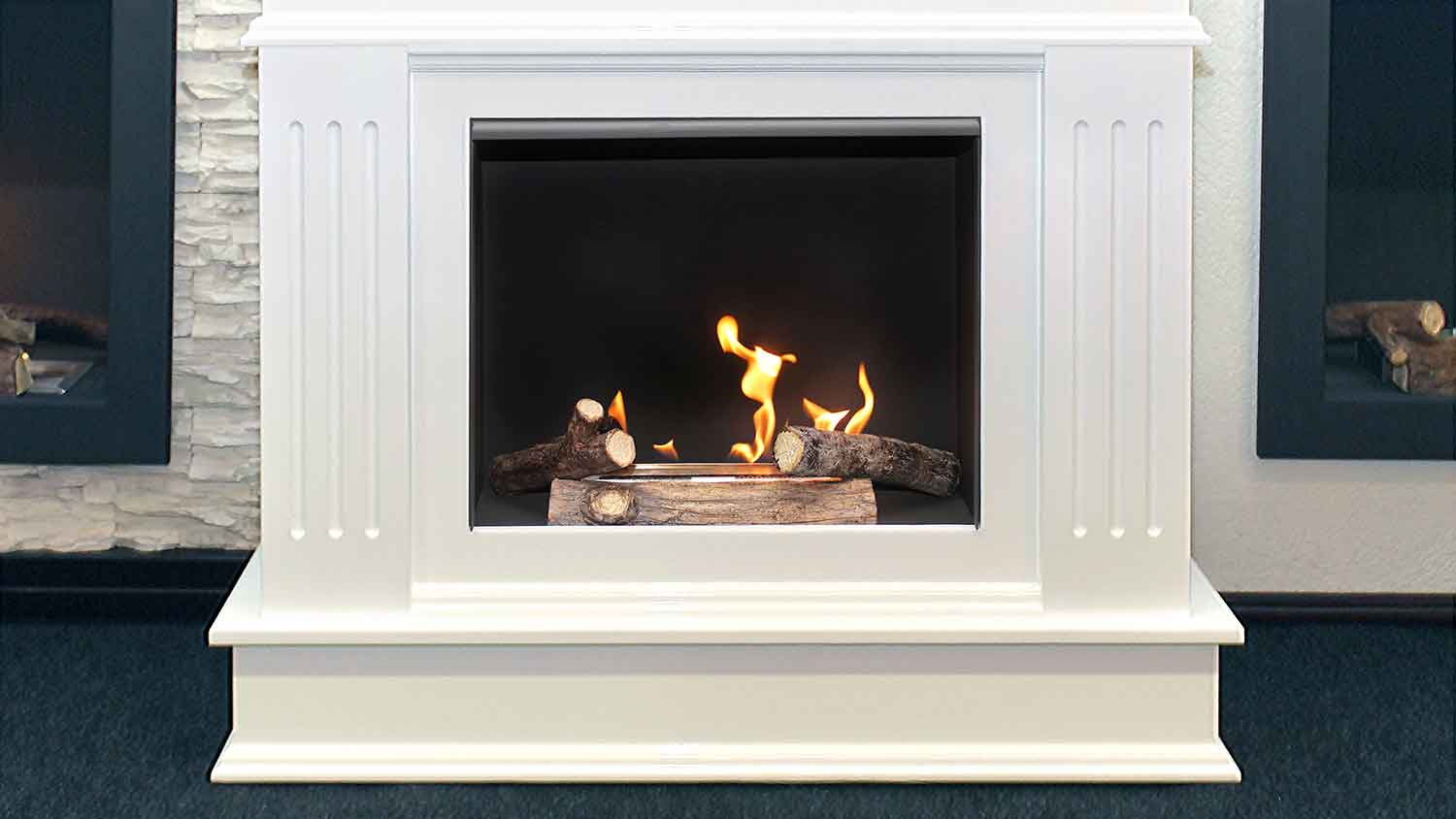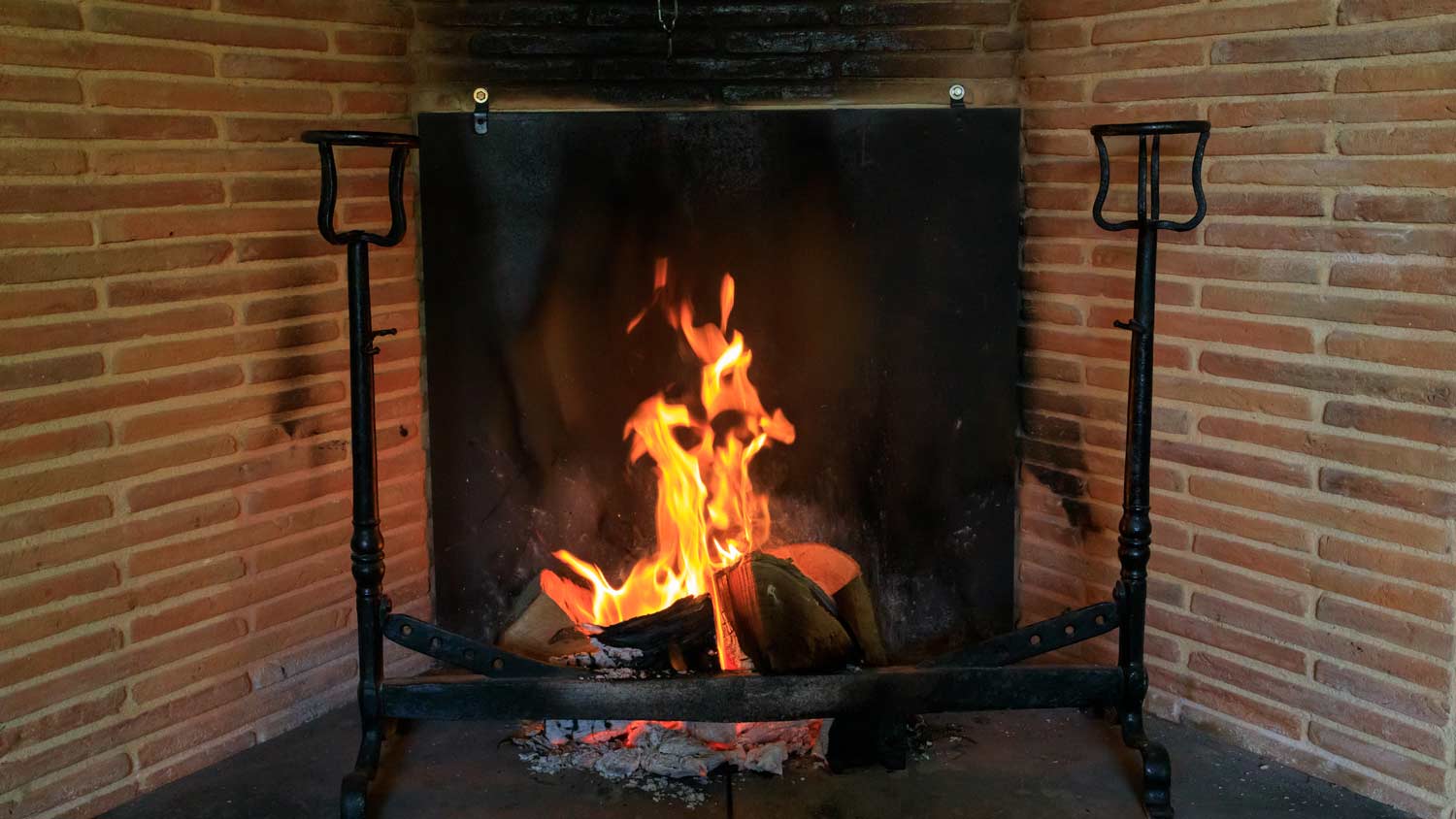How Much Does It Cost to Remove a Fireplace Insert? [2025 Data]
The average cost to remove a fireplace insert ranges from $600 to $2,500, with a national average of $1,550, depending on the type of fireplace insert.


Removing the fireplace insert—either for cleaning, upgrades, or renovations—will cost between $600 and $2,500. When the weather outside is truly frightful, you'll want to make sure your fireplace is burning as efficiently as possible. Fireplace inserts were invented to upgrade wood-burning stoves, making it easier to replace them with gas or electric models. You may be able to save some money if the system is easy to remove on your own.
Fireplace Insert Removal Cost by Fireplace Type
There are three main types of fireplace inserts: wood or pellet, gas, and electric. Wood-burning fireplace inserts are an excellent solution to creating a cleaner system without giving up the magic of tossing another log on the fire. Gas fireplace inserts—which run on natural gas or propane—switch on with a button, much like an electric unit.
| Fireplace Insert Type | Removal Cost |
|---|---|
| Wood-burning | $500–$1,000 |
| Gas | $700–$1,200 |
| Electric | $250–$400 |
You might choose to replace or remove a fireplace insert for a variety of reasons. In some places, your area may require an EPA-qualified insert, especially when it comes to wood-burning designs. Each state has its own ordinances around inserts that meet efficiency and pollution standards.
The cost to remove an insert significantly varies depending on its design. Wood and gas fireplace inserts attach to other parts of a more complex ventilation system, typically designed for your insert model. Electric fireplace inserts don't require ventilation, but they do attach to your home’s electrical wiring. These are important details to note when considering the cost to remove the insert.
Cost to Remove Wood-Burning Fireplace Insert
Removing a wood-burning insert should only cost between $500 and $1,000 with the help of a professional. You may want to call a fireplace pro simply due to the insert's size—more on this below—but it's not always necessary unless you're removing more of the fireplace or chimney structural support.
If you're getting rid of your old fireplace insert entirely, add an extra $130 to $360 for junk removal services.
Cost to Remove a Gas Fireplace Insert

Removing a gas fireplace insert comes with the highest related costs, adding up to as much as $1,200. When a professional takes out the insert, expect to pay between $250 and $600. However, you'll need a plumber, who is qualified to work with gas lines, or an electrician to disconnect the insert from its fuel source. This will run an additional $100 to $300. Removing the related chimney breast, vents, pipes, and flue could increase the project total by $300 more.
Cost to Remove an Electric Fireplace Insert
Removing an electric insert is substantially less involved than removing a wood-burning or gas insert. This is because electric fireplaces don’t require venting or any particular exhaust systems—if they require any at all. This makes removing an electric fireplace insert about as complicated as removing the heating element in your oven. Expect to pay a professional $250 to $400 to remove an electric insert.
Cost to Remove a Fireplace Insert by Location
The primary price factor here is the cost of labor. Unless you're adding a new fireplace to your home, the cost of materials won’t factor into the total price of the project.
In other words, if you live in an area with generally pricier overhead and hourly costs for contractors, expect higher prices for fireplace removal. On the same note, also remember that high seasonal demand can increase labor prices.
| Location | Removal Cost Estimate |
|---|---|
| San Francisco, CA | $550–$1,300 |
| Dallas, TX | $475–$1,050 |
| Detroit, MI | $400–$900 |
| Rochester, NY | $410–$950 |
| Boulder, CO | $500–$1,125 |
You can get a sense of the price differences by looking at common fireplace repair costs. For example, you'll pay an average of $200 more in New York City than if you live in Florida—where the demand for fireplaces is much lower.
Removing a Fireplace Insert Yourself vs. Hiring a Pro
Taking out a wooden fireplace can be a DIY job if you're prepared for the heavy lifting—literally—and the mess it often causes in your home. If you have a gas or electric fireplace, we recommend leaving this work to certified professionals.
Removing the full insert typically requires a tarp, a power drill, a socket wrench, and a utility knife. The total cost for all of the necessary tools will run between $50 and $100. Since the wood-burning insert is only attached with caulking and bolts, you should be able to remove these and pull out the insert on your own.
The moment you get into removing additional pieces, such as the chimney liner or the firebox, it's best to call in a professional. Original masonry fireplaces require a professional structural engineer or mason to address the brickwork.
Remember that if you're tossing the old fireplace insert, tack on another $130 to $360 for removal.
Fireplace Insert Removal Cost Factors
When removing an insert, there are some key differences that separate the costs for each type of insert.
Wood-burning insert: Replacing with another wood-burning insert negates this additional cost, but if the fireplace itself will be closed off, or another insert will be used that requires different venting, the chimney will need to be sealed.
Gas insert: Gas inserts are the only inserts that require fuel to be fed to them through a direct line, so removing a gas insert will require removing the gas line.
Electric insert: Any electrical that was routed to the insert will need to be shut off or repurposed. A live line to an unused outlet should be removed if it can’t be used.
If gas lines are buried underground or require more involved removal, expect the cost of the project to rise significantly. The good news is that since most fireplace inserts are replaced with electric ones, the installation cost is usually significantly less than removal. However, this can become more complicated if there isn’t electricity running to the fireplace (when installing an electric insert).
Ways to Save Money On Fireplace Insert Removal
There aren’t many areas to cut costs on fireplace insert removal. However, you can save money by doing the following:
Call at least three local fireplace professionals to compare quotes and get the best rate.
Hire in the slow season, which for this type of work tends to be summer.
Remove the fireplace insert yourself to save on professional labor costs. However, this option only works for homeowners with prior experience and deep knowledge of their fireplace’s functionality.
How Angi Gets Its Cost Data
Home is the most important place on earth, which is why Angi has helped more than 150 million homeowners transform their houses into homes they adore. To help homeowners with their next project, Angi provides readers with the most accurate cost data and upholds strict editorial standards. We extensively research project costs to develop the pricing data you see, so you can make the best decisions for you and your home. We rely on reputable sources, including the U.S. Bureau of Labor Statistics, academic journals, market studies, and interviews with industry experts—all to ensure our prices reflect real-world projects.
Want to help us improve our cost data? Send us a recent project quote to costquotes@angi.com. Quotes and personal information will not be shared publicly.
Frequently Asked Questions
You can research your fireplace insert or retrofit by checking out the EPA wood stove database. The database includes information, such as a model's emission rate, efficiency, and carbon dioxide output.
In some cases, you can use a fireplace once the insert has been removed. However, before burning a fire, you must have a professional inspect it and the chimney to make sure they're functioning properly and no damage has occurred from removing the insert. That’s because using a fireplace without an insert could create fire hazards due to issues with airflow and heat dispersion, depending on the fireplace design and material. A professional can advise on whether you should make certain repairs or modifications before using your fireplace as an open hearth.
Every market is different, but the general consensus is that since a fireplace is a sought-after item in many homes, the removal of such a feature can negatively impact the value of your home. Therefore, if you plan on selling your house soon, don’t remove it. If you plan on living in your home for a long time, the removal of a fireplace can decrease your bills over time, as heat and air conditioning can both leak through a wood-burning fireplace’s chimney or the exhaust systems of a gas insert.















